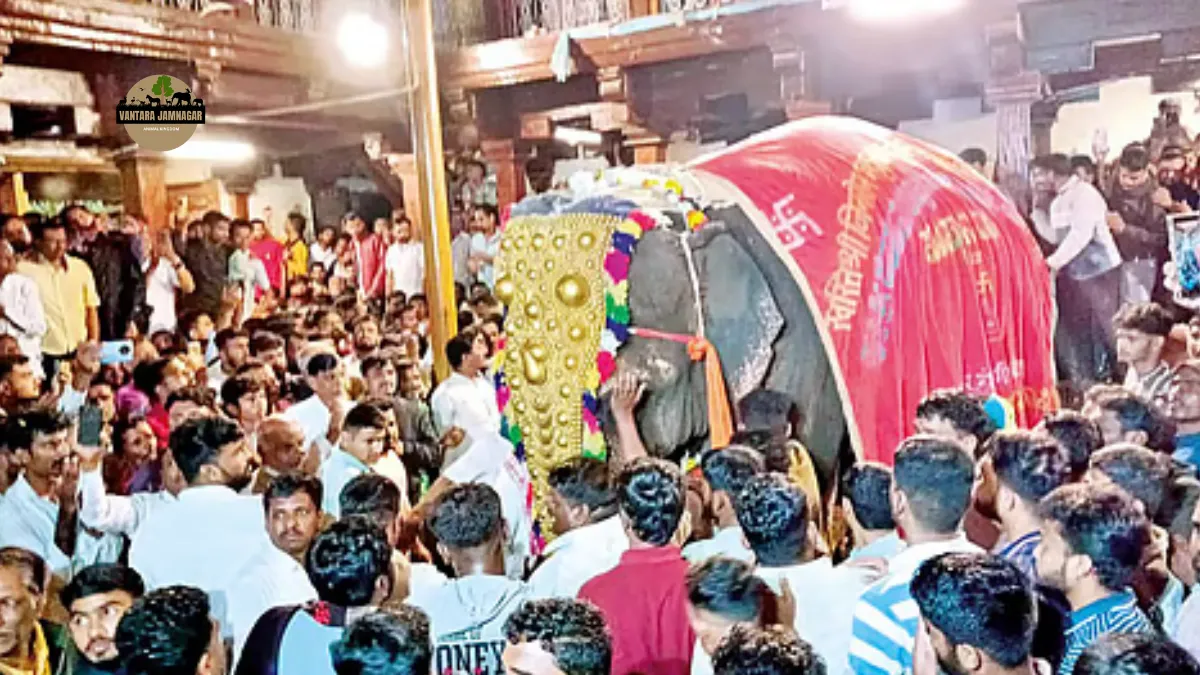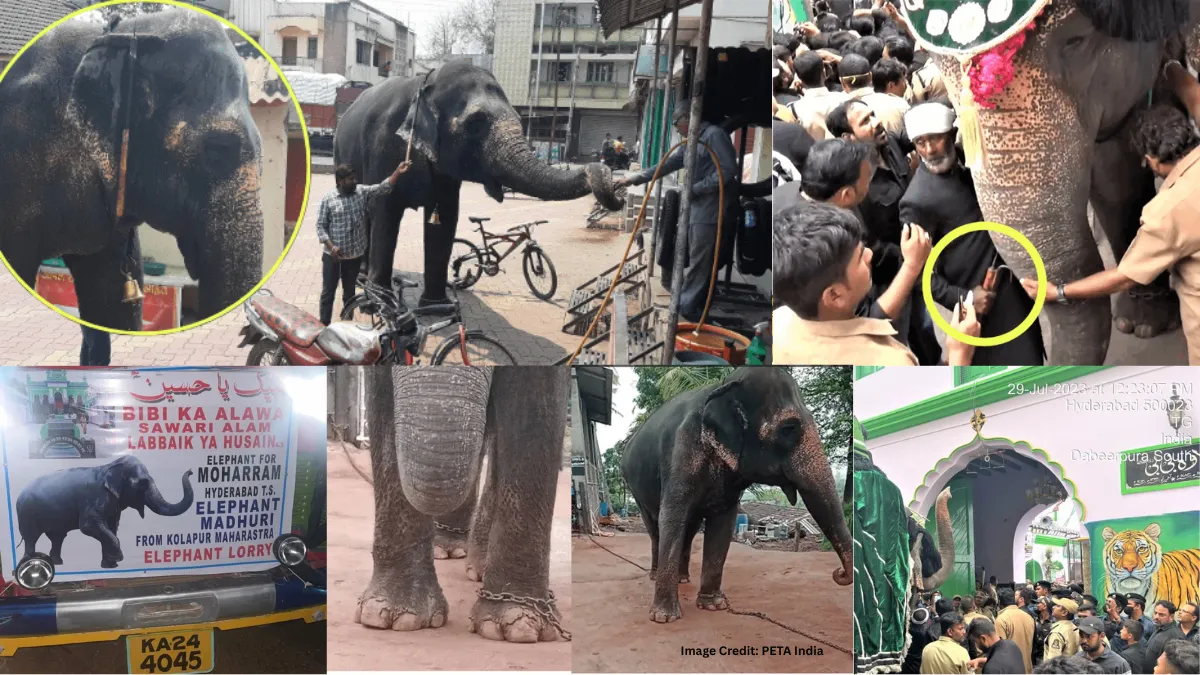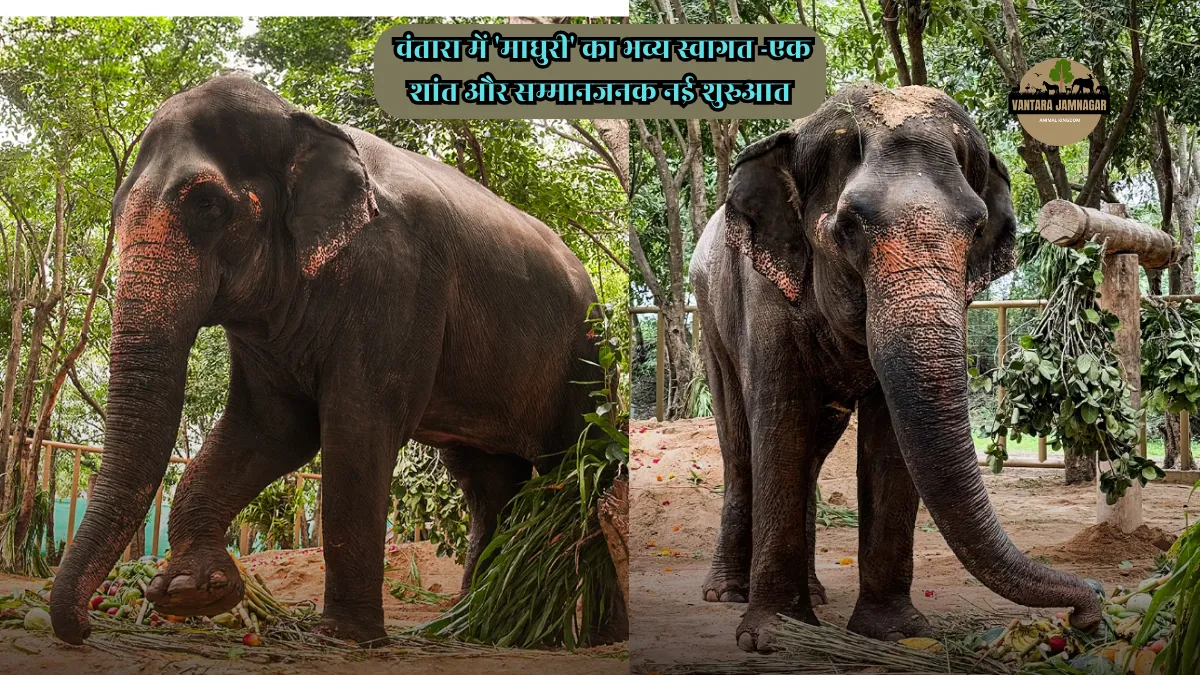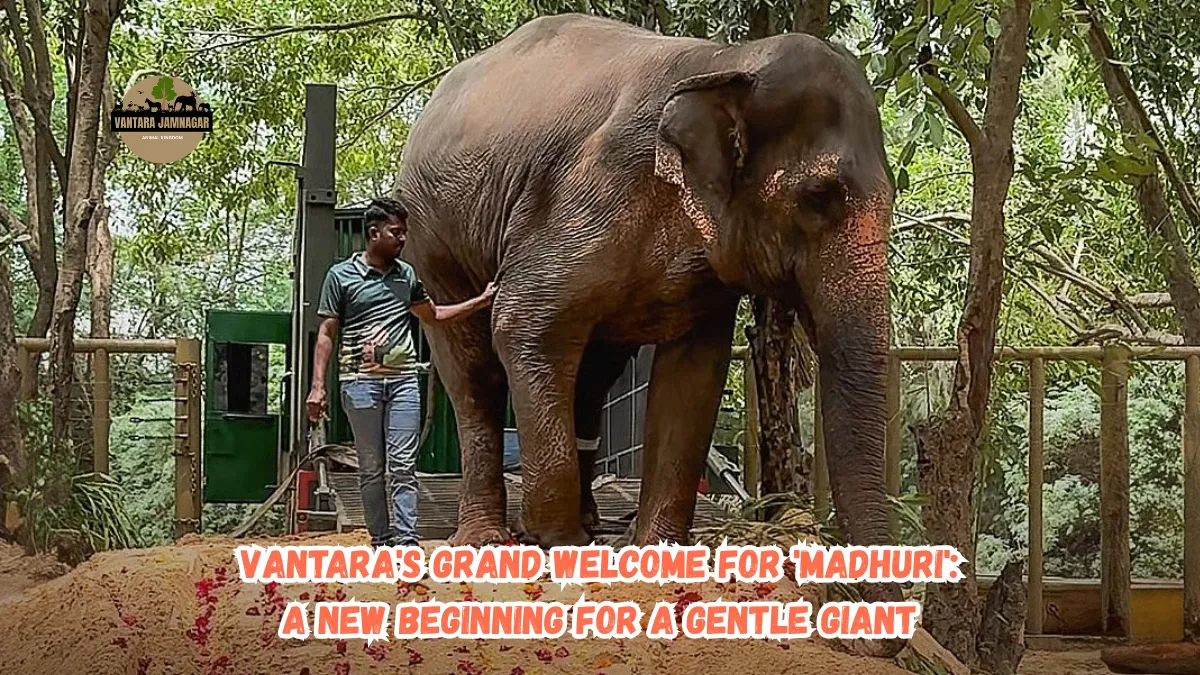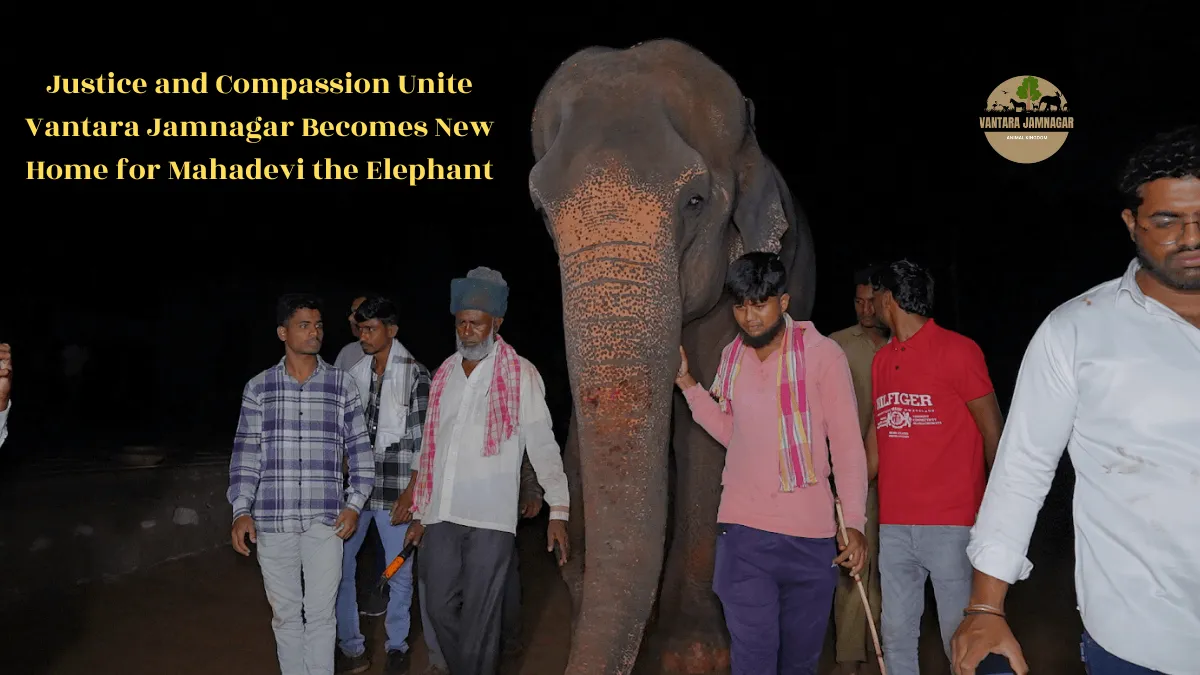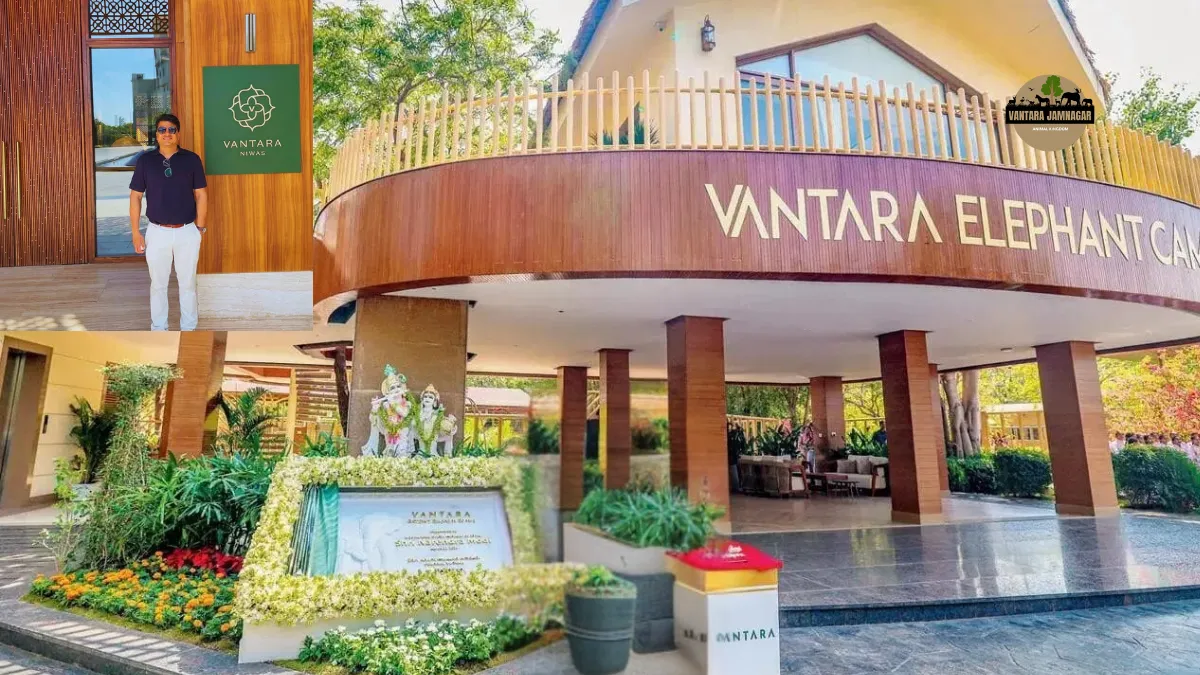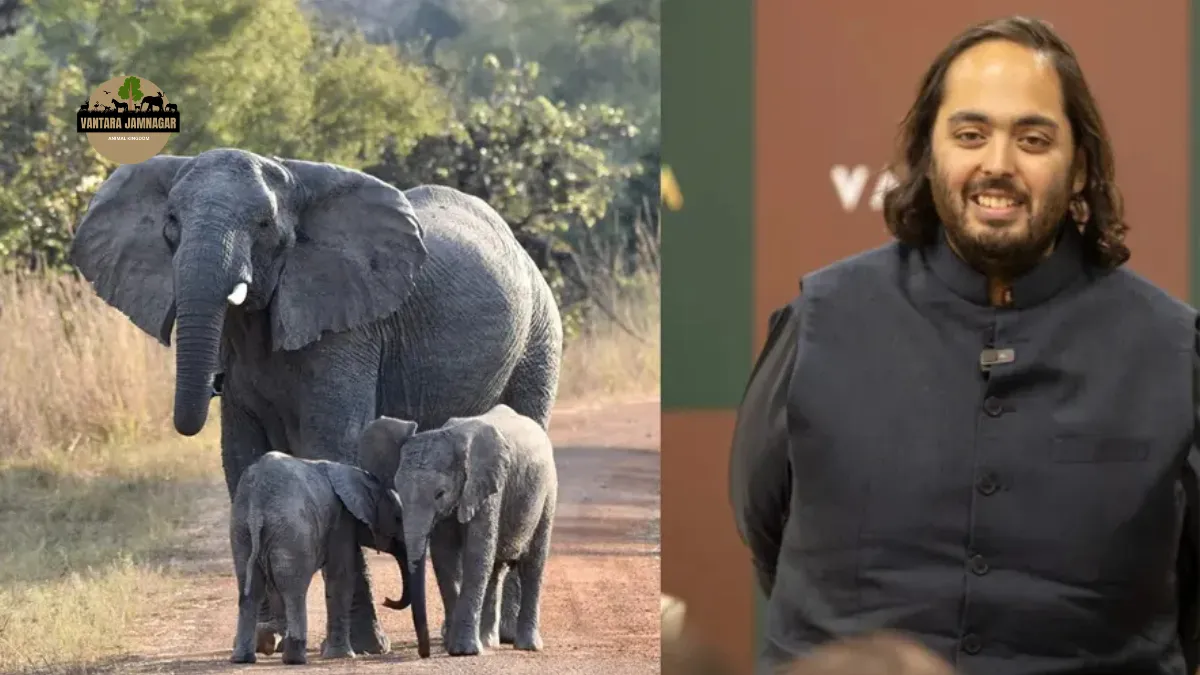Madhuri the elephant, also known as Mahadevi, has become the center of an emotionally charged national conversation about religious tradition, animal rights, and modern wildlife rehabilitation in India. The 36-year-old female elephant, who spent more than three decades at a Jain monastery in Nandani, Kolhapur, has recently been relocated to the Vantara Wildlife Rescue and Rehabilitation Centre in Jamnagar, Gujarat.
This move, ordered by the Bombay High Court and upheld by the Supreme Court, was made in response to serious health and psychological concerns. But it has also sparked a wave of protests from the local community and raised significant questions about how India balances cultural values with animal welfare.
Who Is Madhuri the Elephant?
Madhuri elephant was brought to the Shri Jinsen Bhattarak Pattacharya Mahaswami Jain Math in 1992, when she was just around three years old. For over 30 years, she lived a solitary life at the monastery, becoming a sacred and deeply beloved figure among the devotees. She took part in religious rituals and was treated with reverence, forming a spiritual connection with the local people.
However, long-term captivity and isolation took a toll on her health. Animal welfare experts flagged multiple physical issues including foot rot, overgrown toenails, and arthritis. She also exhibited stereotypic behavior, like constant head bobbing—a known sign of psychological trauma in elephants held in solitary confinement.
Why Was Madhuri Elephant Relocated?
In July 2025, an NGO submitted a report to the Maharashtra Forest Department and the Supreme Court-appointed High-Powered Committee (HPC), expressing concern about Madhuri’s deteriorating health. Acting on these findings, the Bombay High Court ordered that the elephant be shifted to a more suitable environment where she could receive proper medical care and socialization.
The court selected Vantara, a state-of-the-art wildlife rescue and rehabilitation facility in Gujarat, operated by Reliance Industries. On July 25, 2025, the Supreme Court upheld the High Court’s order, confirming that Madhuri should remain at Vantara for her wellbeing.
Important Facts About Madhuri Elephant
| Detail | Information |
|---|---|
| Elephant Name | Madhuri (also known as Mahadevi) |
| Age | Approximately 36 years |
| Previous Location | Jain Math, Nandani, Kolhapur |
| Current Location | Vantara Wildlife Centre, Jamnagar, Gujarat |
| Health Concerns | Arthritis, foot rot, overgrown toenails, psychological distress |
| Legal Orders | Bombay High Court (July 16), Supreme Court (July 25) |
| Key Purpose of Transfer | Medical treatment and psychological recovery |
The Emotional Backlash in Kolhapur
Madhuri elephant’s relocation has caused a massive emotional response from the people of Kolhapur. The local community, political leaders, and religious groups have come together to demand her return to the Jain math. According to Maharashtra minister Prakash Abitkar, efforts are already underway to bring her back.
A meeting held in Kolhapur with Vantara representatives resulted in a statement that the organization is open to discussing options. Meanwhile, BJP MP Dhananjay Mahadik and Shiv Sena MP Dhairyasheel Mane are pressuring the Central Government to file a petition in the Supreme Court supporting Madhuri’s return.
On the ground, protests have taken a modern twist. Many residents of Kolhapur have begun porting out of Jio mobile services—a company owned by Reliance Industries, which also manages Vantara—as a symbolic act of protest.
People’s Movement: Demand for Madhuri’s Return
The public demand for Madhuri elephant’s return is growing stronger by the day. Congress MLC Satej Patil reported that more than 1.25 lakh people have signed a petition asking that Madhuri be brought back to the Jain math. These signed forms are being sent to the President’s Office to push for reconsideration.
The people of Kolhapur argue that Madhuri was not just an elephant but a member of their spiritual family. For them, her absence represents not just a loss of a sacred animal but a rupture in their long-standing religious traditions.
Also read:Justice and Compassion Unite Vantara Jamnagar Becomes New Home for Mahadevi the Elephant
Life at Vantara: A New Chapter for Madhuri
At the same time, Vantara is doing everything possible to provide a peaceful and healthy environment for Madhuri elephant. In a social media post, the center stated that they are approaching her care “step by step, at her pace, with the care and respect she truly deserves.”
Madhuri is now receiving hydrotherapy, expert veterinary attention, and the chance to socialize with other elephants—something she never experienced in her previous life. For animal rights advocates, this change represents a hopeful future.
Vantara’s website describes the sanctuary as a 3,000-acre conservation zone that offers rescued animals a safe, natural, and enriched environment to recover. The name “Vantara” is derived from Sanskrit, meaning “within the forest”—symbolizing a safe haven for wildlife.
Also read: Madhuri is welcomed at Vantara: वंतारा में ‘माधुरी’ का भव्य स्वागत -एक शांत और सम्मानजनक नई शुरुआत
Cultural Emotions vs. Animal Rights
The case of Madhuri elephant highlights a much broader debate: Should emotional and religious attachments outweigh the needs of animal welfare? Elephants are intelligent, social animals that suffer both physically and mentally in isolation. While the love and respect shown by the Kolhapur community are genuine, experts argue that keeping such animals in solitary confinement is no longer acceptable in a modern society.
Animal rights in India are evolving, and this case could be a turning point. It reminds us that genuine care for animals must go beyond emotion and include scientifically supported decisions for their health and dignity.
Also read: Vantara’s Grand Welcome For ‘Madhuri’: A New Beginning for a Gentle Giant
What Lies Ahead for Madhuri the Elephant?
As of now, Madhuri remains at Vantara, undergoing treatment and rehabilitation. Legal barriers remain in place preventing her return, but political and public pressure continues to mount. The coming weeks may see further legal developments, but one thing is certain: Madhuri’s journey has become a symbol of the complex intersection between tradition and progress.
Whether she stays at Vantara or returns to Kolhapur, Madhuri has already left a deep mark on India’s consciousness. Her story is no longer just about one elephant—it is about how a nation defines compassion, care, and its responsibility toward the voiceless.

